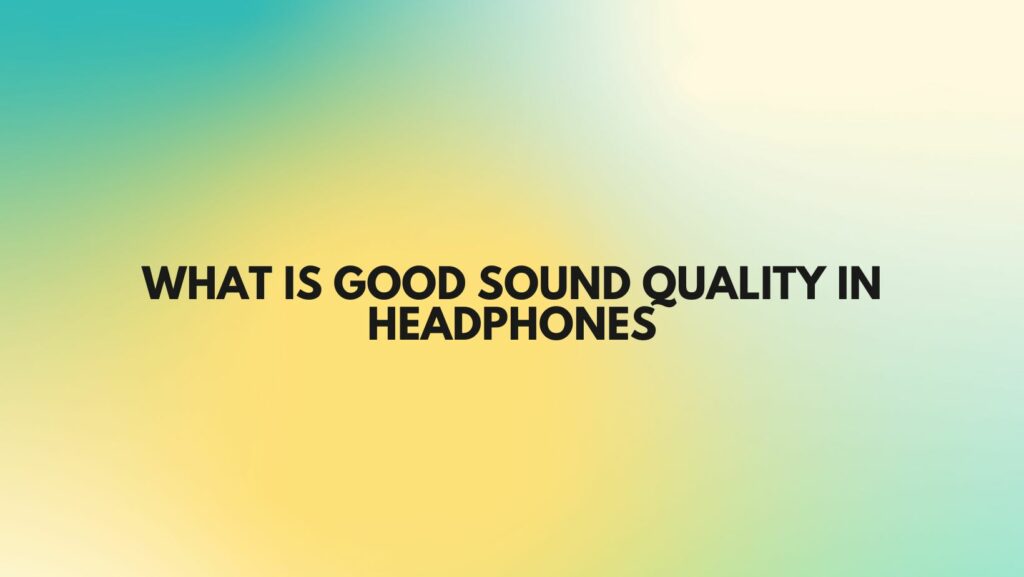The pursuit of good sound quality in headphones is a quest shared by audio enthusiasts and casual listeners alike. As technology advances and innovation continues to shape the audio landscape, defining what constitutes “good” sound quality becomes increasingly nuanced. In this article, we delve into the intricacies of sound quality in headphones, exploring the key factors that contribute to an exceptional auditory experience.
Clarity and Detail: One of the hallmarks of good sound quality in headphones is clarity and detail in audio reproduction. High-quality headphones should faithfully reproduce every nuance and subtlety in the music, from the delicate pluck of a guitar string to the nuanced inflections of a vocalist. Clarity ensures that each element of the music remains distinct and well-defined, allowing listeners to immerse themselves fully in the soundstage.
Balanced Frequency Response: A balanced frequency response is essential for achieving good sound quality in headphones. The headphones should reproduce frequencies across the entire audible spectrum with accuracy and balance, ensuring that no particular frequency range dominates the sound signature. From deep, resonant bass to crisp, clear treble, a well-balanced frequency response allows listeners to experience the full richness and depth of the music.
Dynamic Range and Transients: Dynamic range refers to the difference between the quietest and loudest sounds in a piece of music. Good sound quality in headphones encompasses a wide dynamic range, allowing for the faithful reproduction of soft whispers and thunderous crescendos alike. Additionally, headphones should accurately reproduce transients—the sudden, sharp attacks and decays of musical notes—capturing the natural dynamics and expressiveness of the music.
Comfort and Ergonomics: Beyond technical specifications, comfort and ergonomics also play a crucial role in determining sound quality in headphones. A well-designed and comfortable pair of headphones allows listeners to enjoy extended listening sessions without discomfort or fatigue. Factors such as ear cup padding, headband adjustability, and weight distribution contribute to overall comfort and user experience.
Noise Isolation and Soundstage: Good sound quality in headphones often involves effective noise isolation and a spacious soundstage. Noise isolation minimizes external distractions and enhances the clarity and immersion of the audio playback. A spacious soundstage creates a sense of depth and dimensionality in the music, allowing listeners to perceive the placement and movement of instruments and vocals within the sonic landscape.
Conclusion: In conclusion, good sound quality in headphones encompasses a combination of factors, including clarity, detail, balanced frequency response, dynamic range, comfort, noise isolation, and soundstage. By considering these elements and evaluating headphone models based on their technical specifications and user reviews, listeners can discover headphones that offer an exceptional auditory experience. Ultimately, the pursuit of good sound quality in headphones is a journey of exploration and discovery—one that enriches the enjoyment of music, enhances the immersion of multimedia content, and deepens the appreciation of audio craftsmanship.

